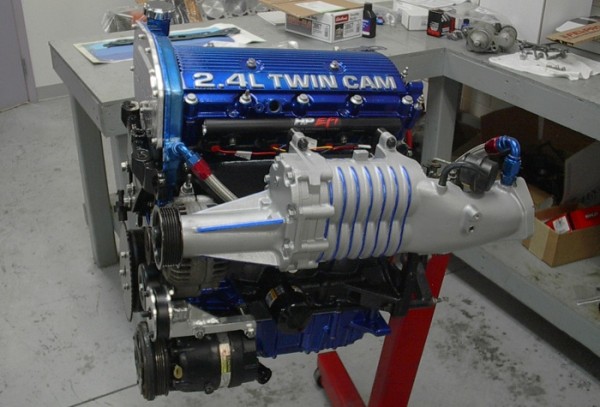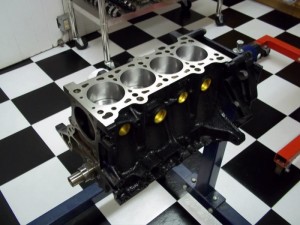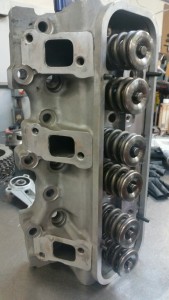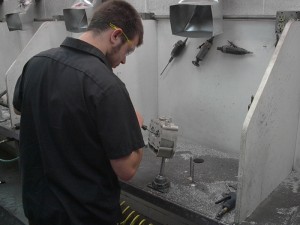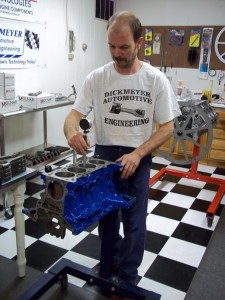Any engine builder worth his or her torque wrench keeps their eyes open. They’re looking for anything and everything to make work easier, better and, of course, more profitable. And just as important as the things they see are the things they don’t see. When it comes to the number of cylinders in the motors they build, are they looking at performance-dedicated six and even four cylinder engines as a viable source of income?
Sure, these engines never took over the way a lot of people thought when gas got crazy in the ‘80s. But these engines didn’t go away, either. They are still out there, motoring around racetracks, cruising the streets and snarling a distinctive growl. That means folks are still buying them.
We wanted to know about this market, and in particular, get an up-to-date report on the engine’s heads, tricks that drive the customers to buy, aftermarket parts and parts that still are only seen on wish lists. We asked a number of builders about these and more to get the skinny on sixes (fours, too).
Heads and head development are always a great place to separate bolt-ons from real builders so we’ll start there. We even narrowed it down to asking if our sources do their own V6 head development. Such an operation can be a daunting task. Tim Allen, General Manager at Joe Mondello Racing Engines says they are all in: “Yes, everything is done in-house.”
Kevin Kroyer, the owner of Kroyer Racing Engines takes a different approach – Let the experts do it. “No, we typically work with one of our CNC vendors for port design on the V6 heads.”
Matt Dickmeyer, owner of Dickmeyer Automotive Engineering says they do more four cylinder work than six. “For every 100 estimates that we do, really only one or two will pull the trigger. In the past, I have done quite a bit with 3.8L for Buick GNs, T-types and later model SC Grand Prixs. We have also done some 2.5/3.0L Duratec engines for the Ford Contour SVT. Some time ago, I built a 1,000 HP, 3.8L for a Mustang and I am actually quoting a 4.4L Stroker Ford 3.8 for a customer but I doubt anything will come of it due to cost. In my area, people usually pull the V6 and install a nasty V8. We do have a couple of crazy four cylinder builds going on for a customer in Hawaii and Southern Ohio. Yes, we do all of our cylinder head development in house.”
Dave Arce is a diversified automotive machine shop owner at Arce Engines and brings up the bottom line of performance V6 heads. “Unlike V8 cylinder heads, there are not as many aftermarket performance cylinder heads for the V6 world,” he says. “Most of the time we have to make do with the existing castings. In other words, we have to do our own development work to get more performance out of them.”
Next, we asked if they had any tricks for wringing power out of V6 engines that makes their customers go crazy with delight. Kroyer told us one that’s hard to miss. “We build as large of a cubic inch engine as is possible, about 325 CID, and then put an IR (individual runner) inlet manifold on the engine for best power.
Dickmeyer pointed out a number of areas that get his customers and their motors going. “With typical lower displacements, it is necessary to raise the RPM ceiling to a much higher level to attain big increases in power. Depending on cylinder head layout, cam selection is paramount. Many V6s feature valve under bucket, valve train; which means lobe lift is valve lift,” he explains. “Though they have two intake valves and look as if they would flow like crazy, generally, the opposite is true, simply because your valve lift is restricted to between .300 and .425˝ yet still has to hold the valve train together. This requires the appropriate intake duration to get the air and fuel into the cylinders. We often incorporate custom length connecting rods to further manipulate port velocity and multi-angle valve jobs that are precise and not cut undersized so as to take advantage of the entire valve diameter.”
Dickmeyer continues,“I also like to sink the valve into the seat a little deeper. This has a positive effect because at low lift, the valve shrouds air flow off the seat until around .050˝ lift. At that point, the piston has had an instant to accelerate downward in the bore, increasing the induction signal in the intake port as valve lift increases. This also blocks a level of low RPM intake reversion, similarly to cutting a 55 degree seat. This is just one small area where increased performance can be found.”
Arce says the tech is very similar regardless of size. “Most V6 heads have the same structure as V8 heads,” he explains. “Many times, we can mimic the same performance procedures for the V6 heads that are performed on the V8 heads. One of the easiest performance upgrades for V6 heads is to increase the valve head diameter size to increase air/fuel flow. The traditional pocket porting, match porting and increasing intake and exhaust runner flow always goes along nicely with the valve size change.”
Intrepid engine builders can obviously do the work once they find the niche and figure out their approach to it, but what about parts? Is there a level of support from parts suppliers, WDs and manufacturers for V6 aftermarket, internal engine parts? What’s out there and how does it compare with V8 parts?
Dickmeyer uses rotating parts as his example: “The majority of the work that we have done definitely involves custom pistons, connecting rods and usually offset grinding the crankshaft. There are a ton of secrets involved in this that have a huge influence on power well beyond the obvious increase displacement.”
Another battle Dickmeyer says he has to fight is one of price and value. “Some customers are mistaken when they think that building an engine with two less cylinders must be cheaper.”
Arce says he’s happy with his supply chain. “Aftermarket parts and availability for V6 performance parts seem to be no issue. Technology has really taken over on support of any type of aftermarket automotive part. What I mean by that is it seems that you can get anything made thanks to CNC machine capabilities. Take, for example, small-engine pistons. If you have a specification, you can have that piston made in a reasonable amount of time and cost.”
Kroyer is also happy. “We work with a lot of good aftermarket suppliers and get good support from the ones that are producing V6 parts.”
Allen agrees that manufacturers who have the parts are great to work with – the drawback is that smaller parts are still outnumbered.
“Manufacturers currently have a much smaller selection of components available for V6 engines when compared to the V8 counterparts,” he admits, “ but they’ve always been happy to work with us on camshafts, valve train and other products to meet the needs of the customer.”
Turning that last question around, are there product categories for which no good alternatives to OEM products exist that really need attention from aftermarket suppliers? Arce says it’s all good. “I truly feel the aftermarket automotive world has a very wide variety of parts, components and knowledge to support 90 percent of what most V6 enthusiasts are looking for today. Again, I think technology has really allowed this to happen.”
There will always be differences between engine styles and brands,” believes Mondello’s Allen. “There may be limited availability on components, but it mostly comes down to which engine platform you are working with. There is a good amount of performance products for Buick V6 engines as well as the Chevrolet 90 degree V6 engine. There has been a lot of development work done for other applications, but it has mostly been specialized, competition-only venues and the products did not make it to shelf stocking status with the manufacturer.”
Allen says pistons, connecting rods and valve train parts are probably the easiest parts to procure for domestic V6 builds, but areas such as crankshaft and induction systems are very limited at this time. “In regard to import engines, the scenario plays out about the same,” he explains. “Engines such as the Nissan V6 have a larger amount of performance products available than others, but it all boils down to doing your homework and planning out your selection.”
Dickmeyer says it can be as simple as matching what you do with parts manufacturers. “We do such a broad range of custom work that we don’t really rely on parts sitting on a shelf. And the small amount of work that we don’t do in-house, we use a select group of manufacturers and parts suppliers who ‘get’ what we’re doing, people who we’ve worked with for years and understand some of the crazy things that we pull off. We’ve known these businesses really work hard to do exactly what we need, even though what we ask them for is a little off the wall.”
Stepping away from the engine assembly stand, we asked about any differences in tooling. Specifically, what kinds of machining, measuring or other assembly differences will you find with smaller engines?
“Not many, says Kroyer. “Most of the engines fall into the same specs and tolerances as our other endurance engines.”
Allen agrees. “For the most part, all of the standard procedures that we employ on V8 builds also apply to V6 builds, with some possible variations in regard to bearing clearances. But that is dependent upon the intended usage of the engine.”
Dickmeyer adds another important factor: “Of course, machining and measuring is really important with any engine. But as displacement goes down and RPM goes up, tolerances down to the thousandth become critical. Typically, to extract higher levels of power with smaller engines you need to be diverse in your thinking as well as operations. Similar to the Mazda BP 4 cylinders that we build, we can get nearly 2.2L out of them by increasing the bore to 3.327˝. However, it is important to choose your ring before bore size as many builders bore the engine first, only to find squat for a ring available for that size. The stock stroke is 3.350˝ and a 1.77˝ rod journal. It is a steel crank, so we offset grind for two reasons: to achieve a 3.500˝ stroke and to reduce the journal diameter to 1.613˝. This allows us to use a bearing from a late model Triumph T595/955i three-cylinder engine (another engine that we build quite often). In addition, of course, custom rods and re-hardening the crank as well as many other operations will be required.”
Not only does this increase power with displacement, says Dickmeyer, but it is just like going from a Chevy large journal crank to a Honda journal.
“Reducing bearing speed is another area for HP to be had,” he explains.” Having a large portfolio of engine experience allows the builder to come up with selective interchanging of parts. This creativity allows you to put together an engine program for your customer to attain otherwise unheard of levels of power.”
Arce agrees that creativity is important, especially with these smaller engines. “Thanks to Arce Engines’ diversity, we perform many different engine and cylinder head builds each month. The smaller engine services take less time and ofer more profit. In some cases, depending on the physical size of the smaller engines, tooling seems to be the most troublesome to perform any type of build.”
Overlooking smaller cylinder engine work could have shops coming up short in profits. Are you seeing the differences two or four less pistons can make on your bottom line?

